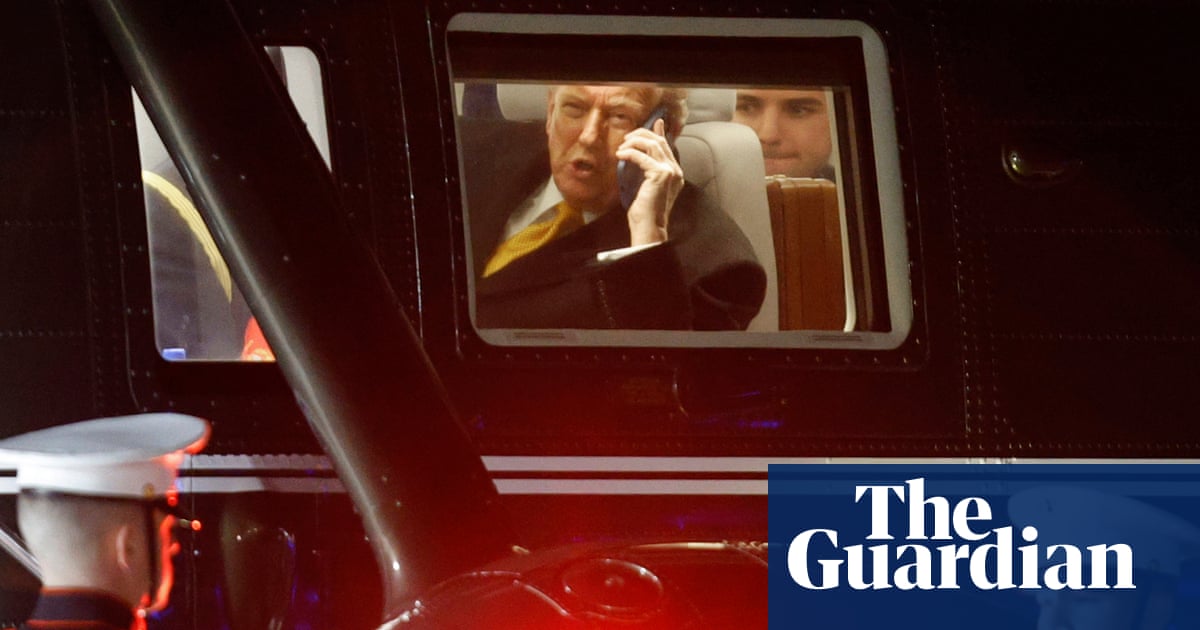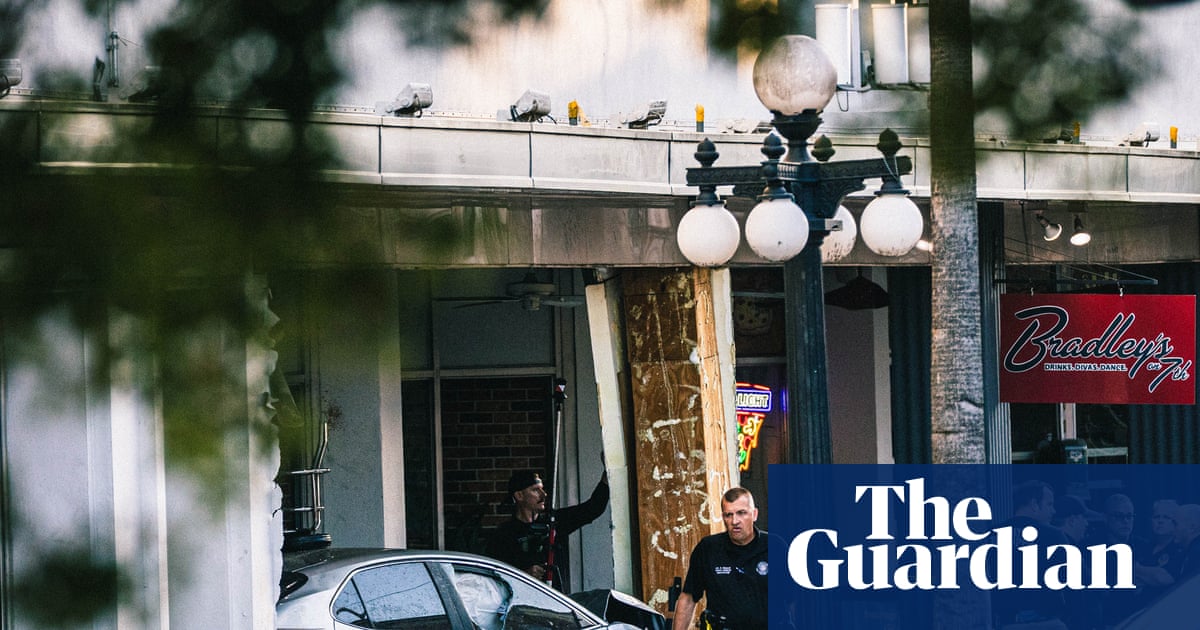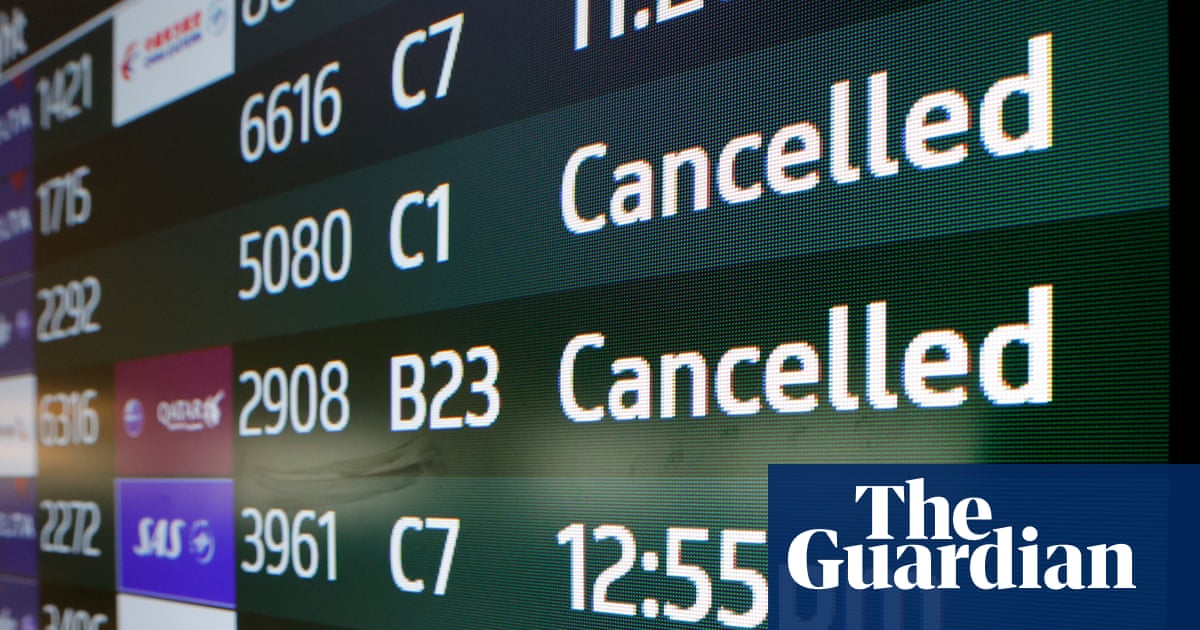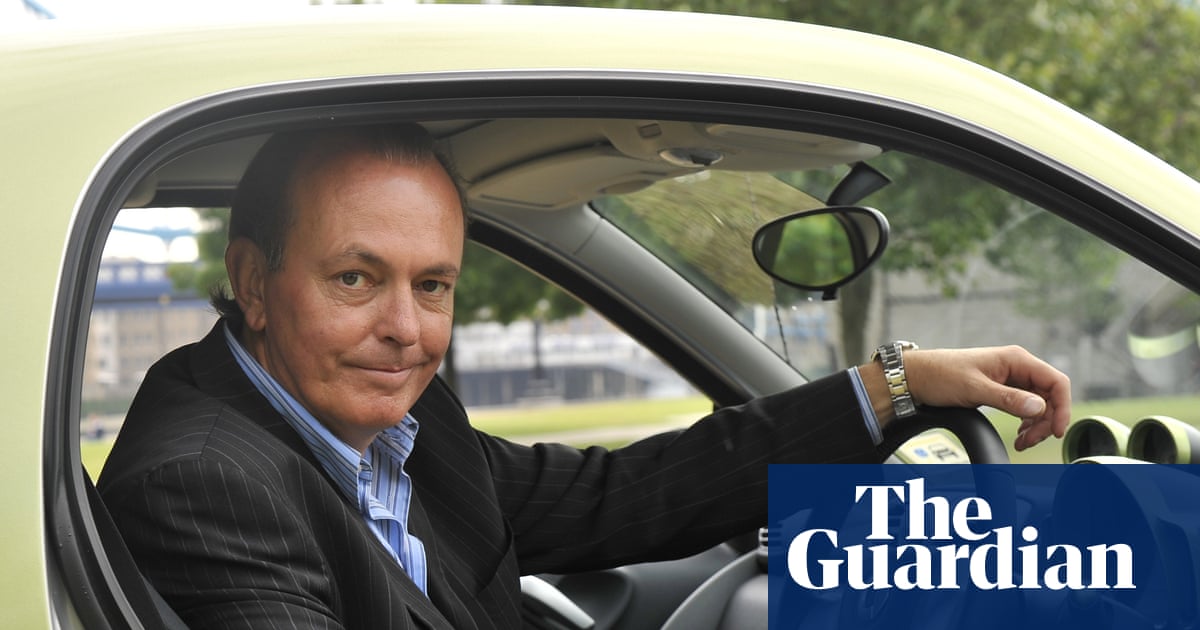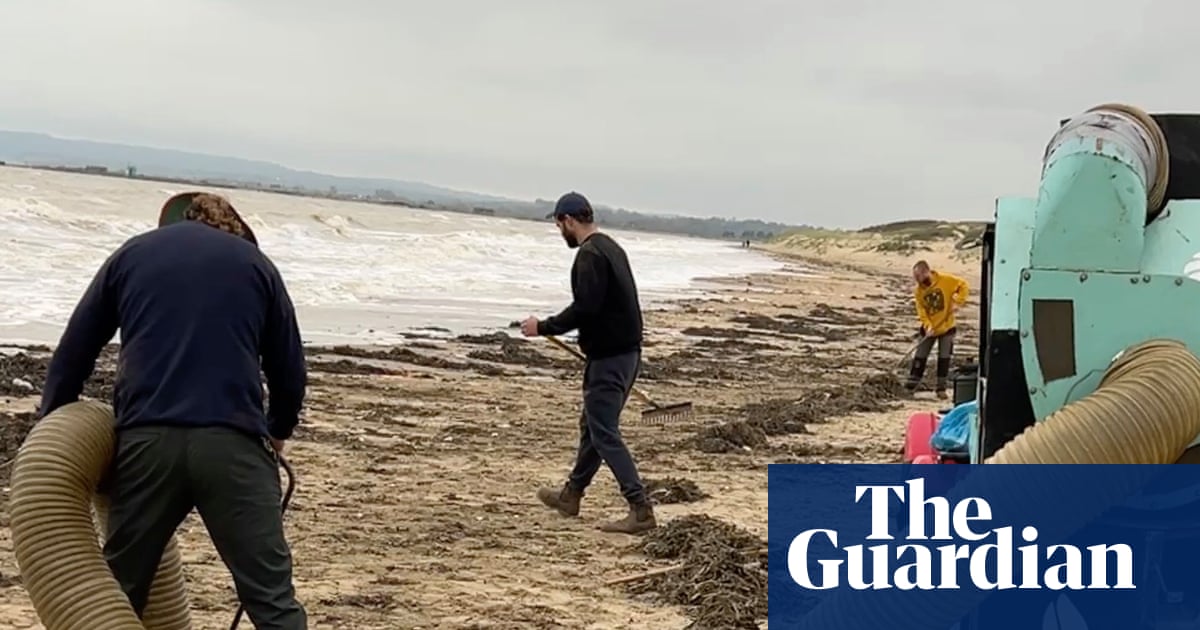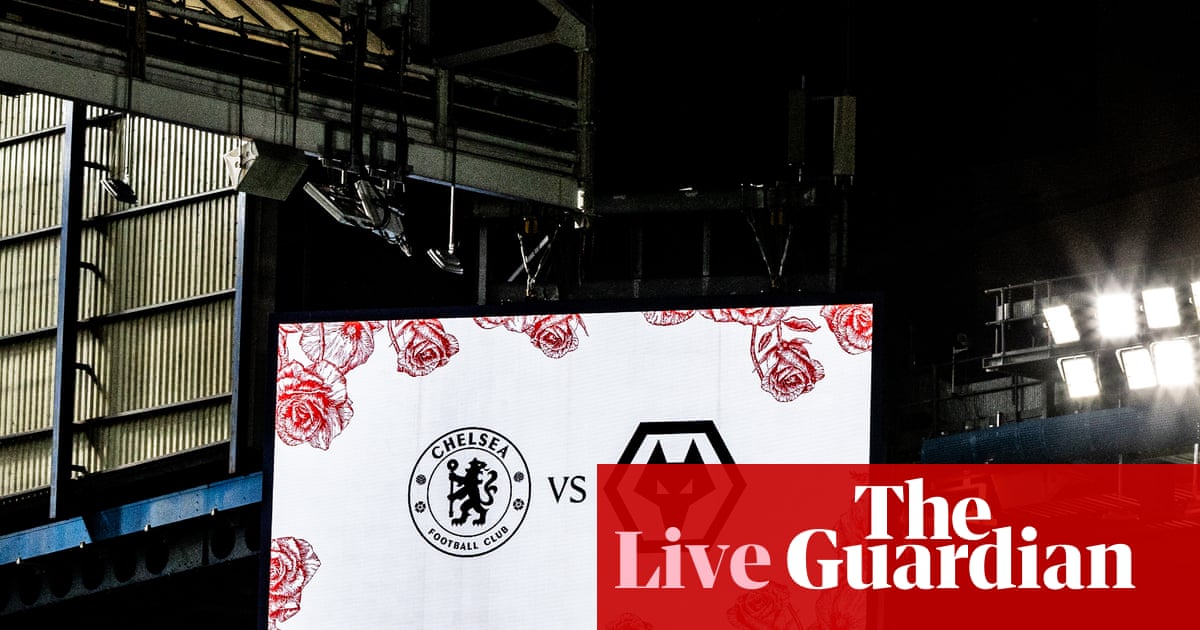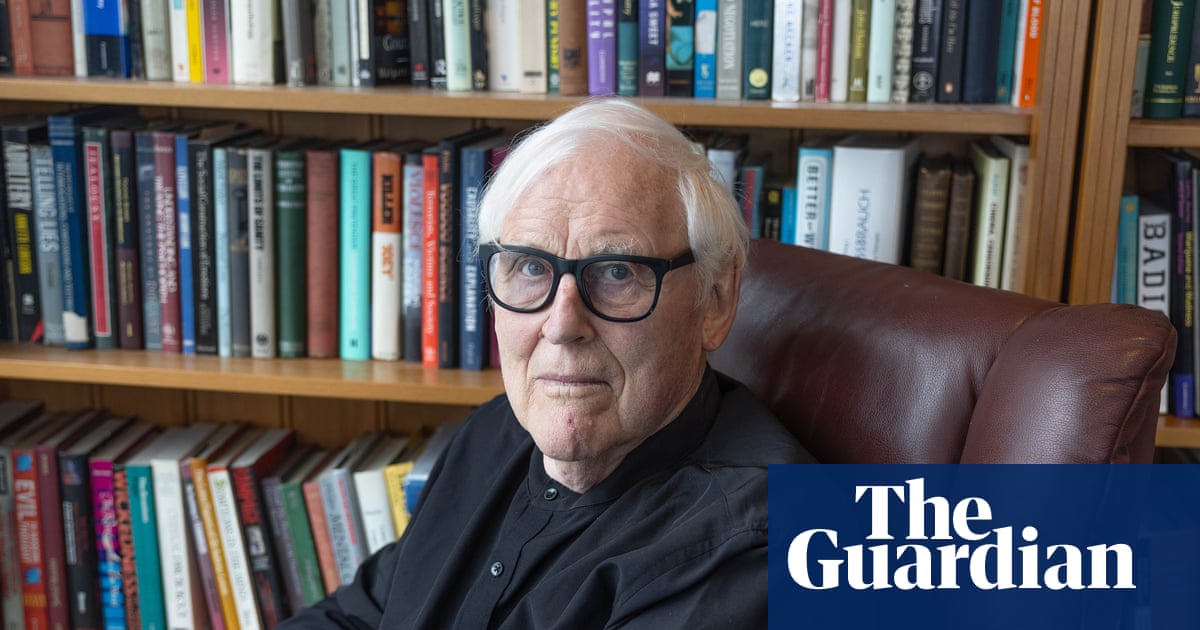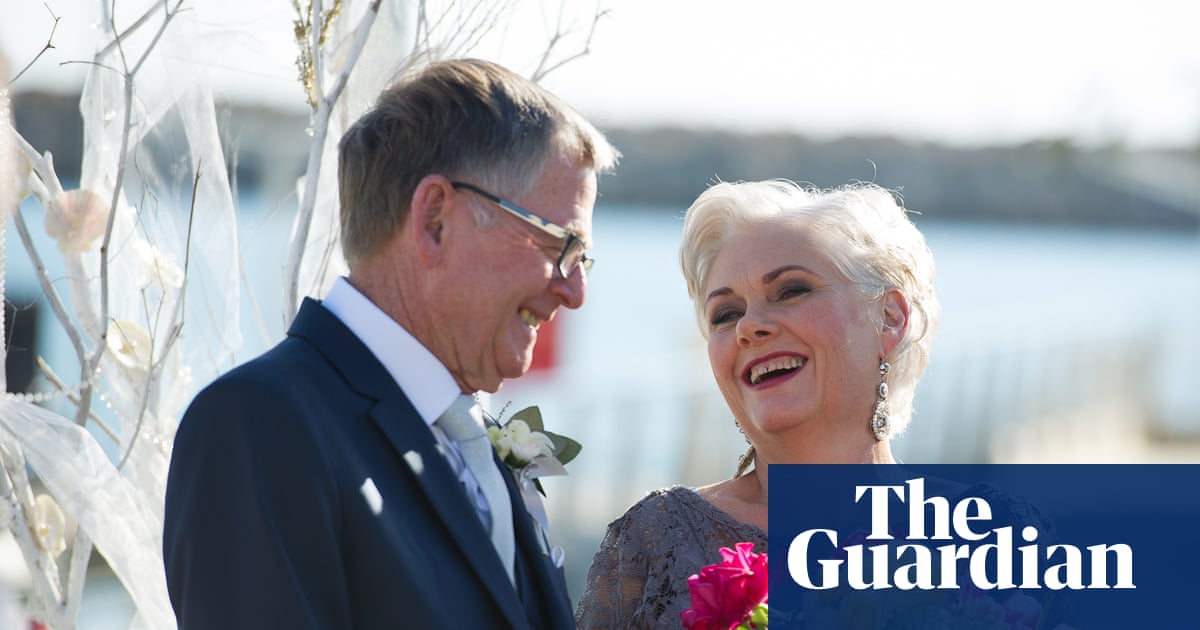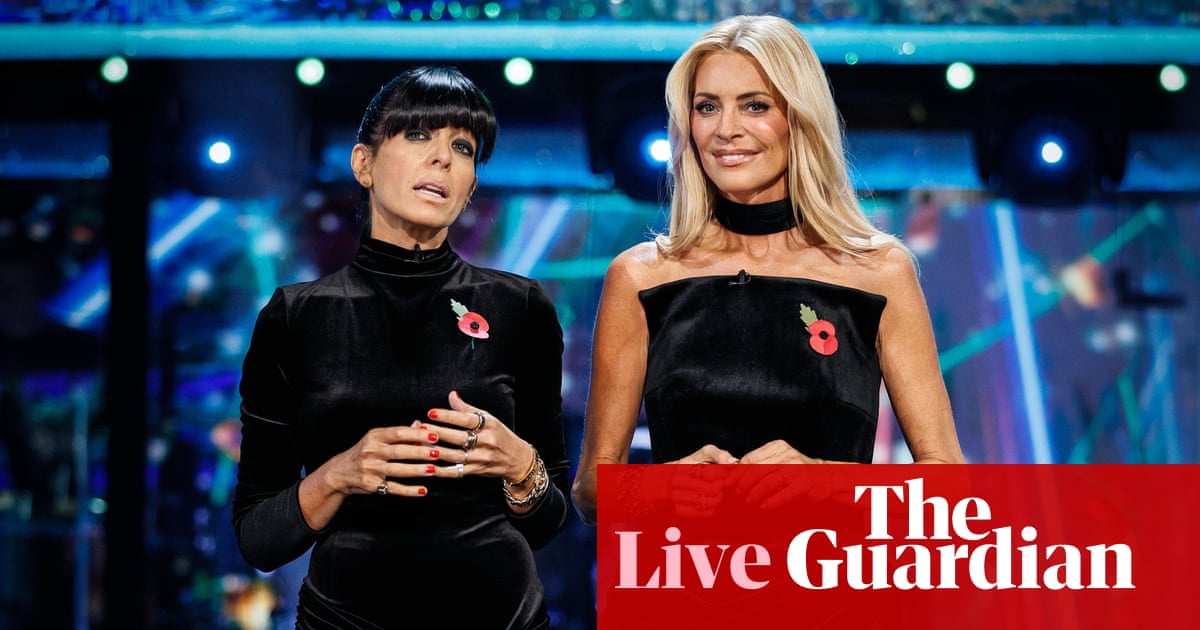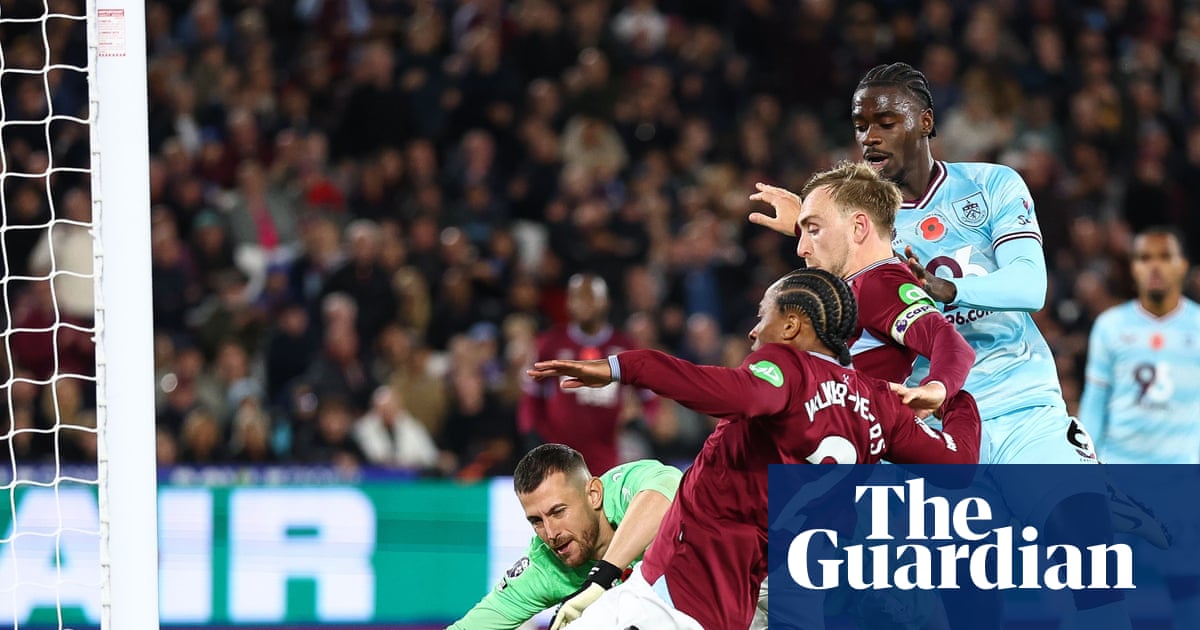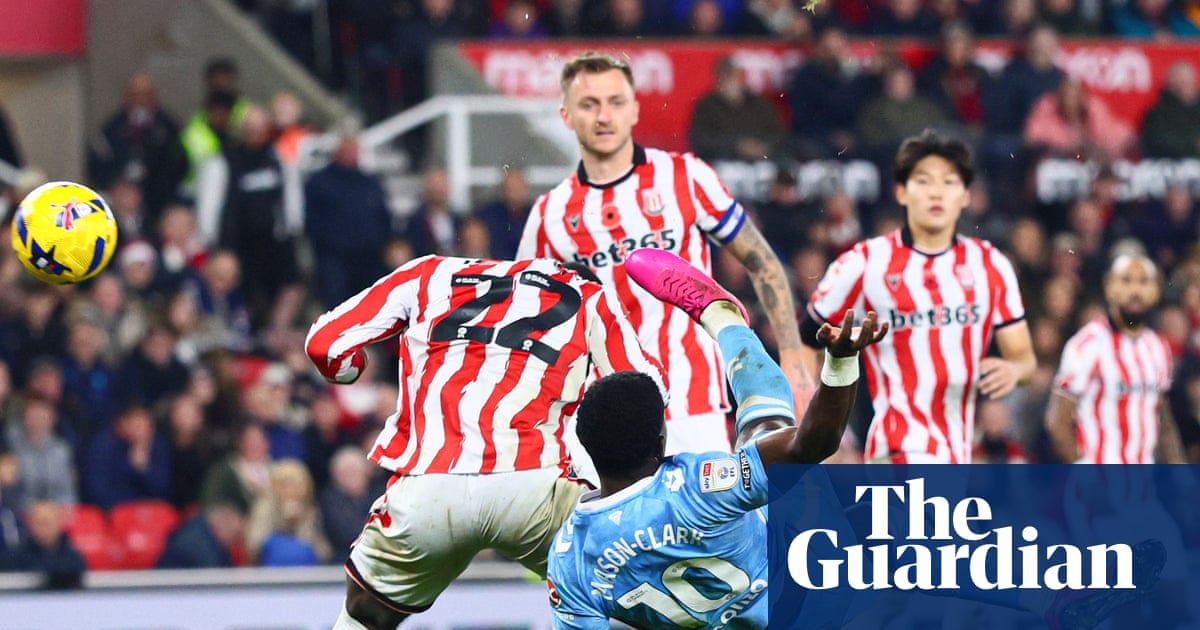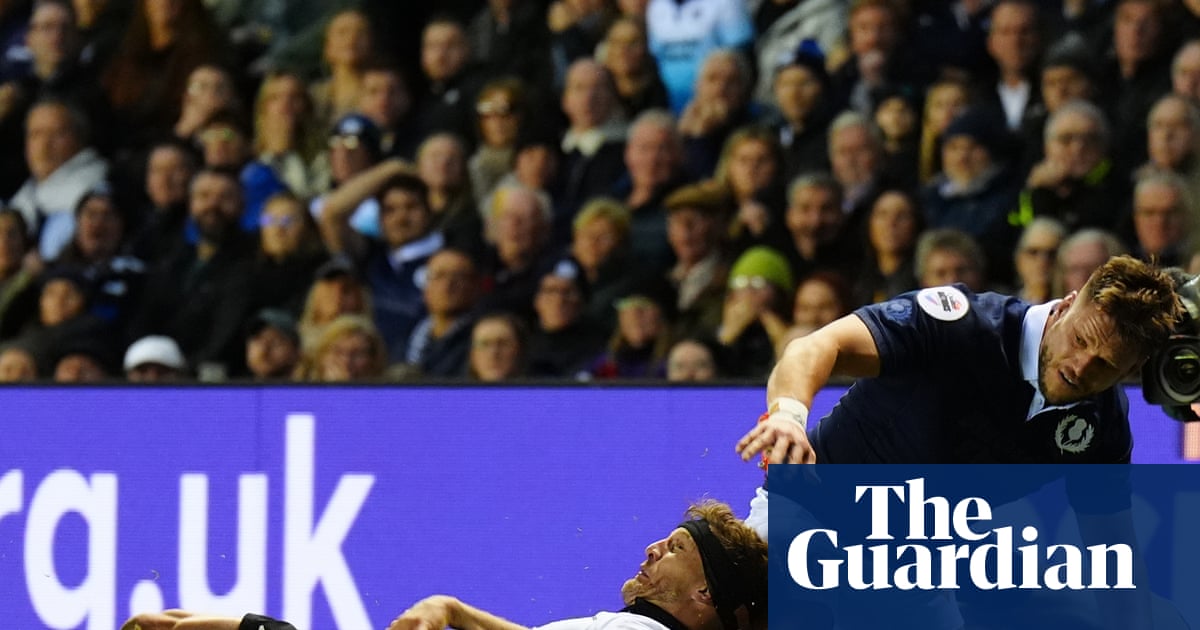It’s the best weekend in London – a reminder of the city at its most open, vibrant and welcoming. After two days immersed in Notting Hill carnival, eating too much food, bumping into old friends, and skanking to reggae and dancehall, I’m left smiling at an event that fosters a rare sense of connection in a city so often accused of being cold.
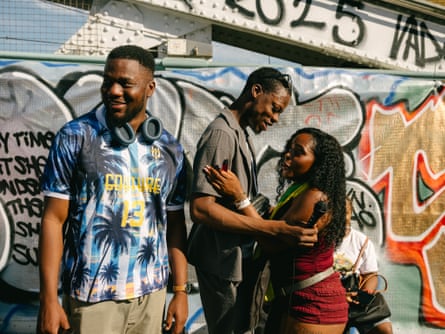
-
Smiles on Golborne Road.
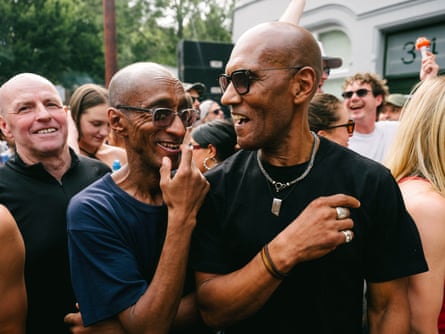
-
Julian and Henok enjoying the vibes at Aba Shanti-I.
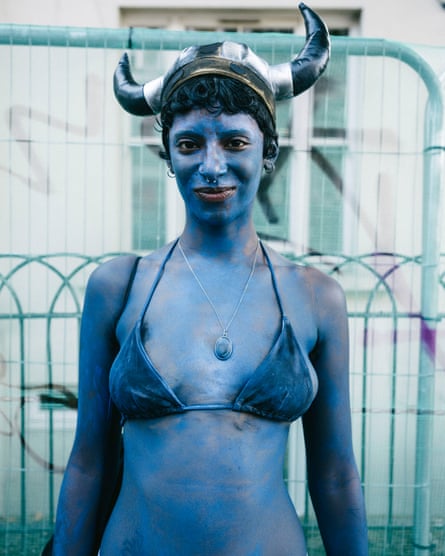
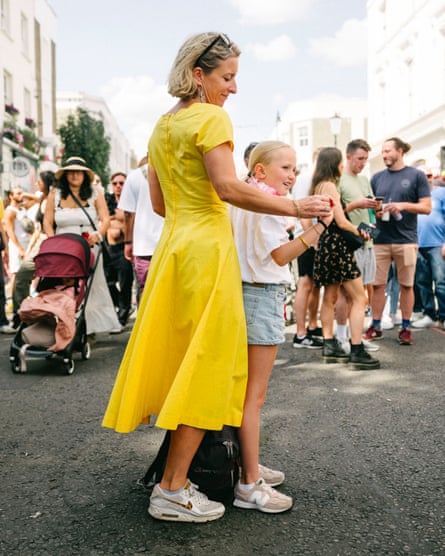
-
Aaliyah after Jab Jab, a mother and daughter share a moment dancing.
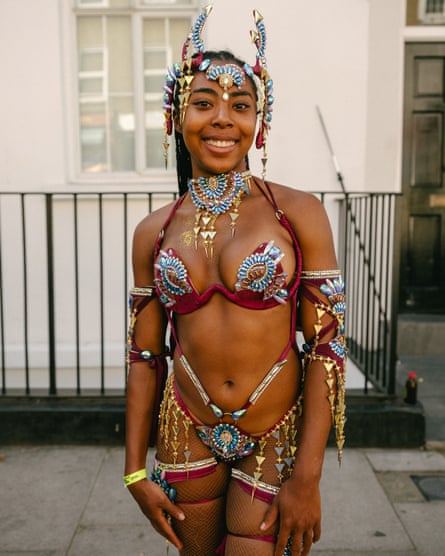

-
Kyhra poses for a portrait after dancing in the parade, and two young members of the Metronome Steel Orchestra.
Yet this year’s carnival almost didn’t happen. In July, organisers needed a £1m emergency boost to cover stewarding costs, raising questions about its sustainability and whether those in government respect the event as the cultural emblem it so clearly is.
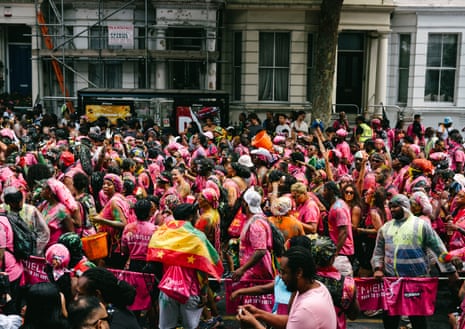
-
The parade in full flow on Ladbroke Grove.
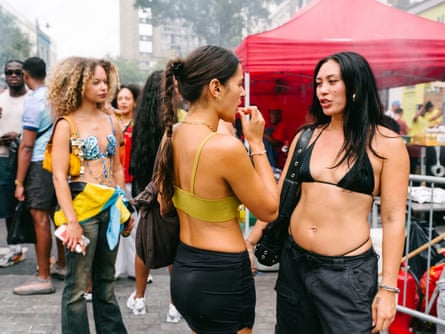
-
Waiting for food on Golborne Road.
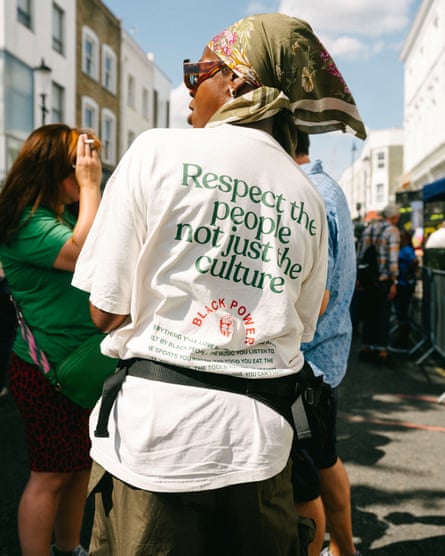
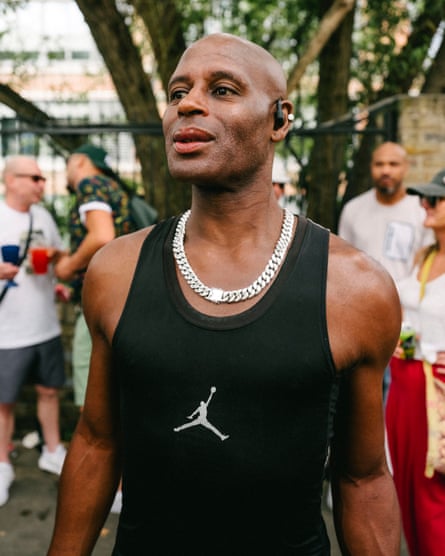
-
Dancing at Gladdy Wax, Peter enjoying the music at KCC.

-
Joao and his cousins catching up.
At my 13th carnival, I’m feeling well-versed in navigating its sprawling labyrinth with a route taking me past KCC, Gladdy Wax, Aba Shanti-I, Rampage, King Tubby and Deviation – each sound system a world of its own, each corner offering another pocket of intimacy, joy and community.

-
Friends enjoy the party from above on Ladbroke Grove.
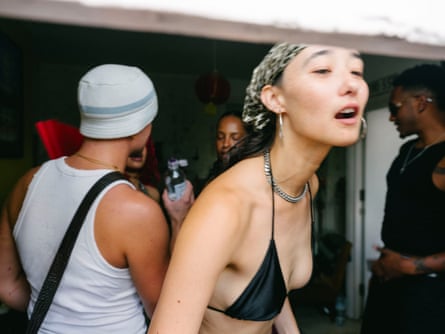
-
Pre-drinks on Ladbroke Grove.

-
Maya and Violet overlooking the parade.

-
Ophelia on the window sill on Ladbroke Grove.
At one point, I bump into my friends Maya and Ophelia, who invite me back to a flat on Ladbroke Grove. I’ve always wondered what carnival felt like from above the street, and with a plate of curried goat and a Magnum in hand, I get to see.
Maya’s living room is a time-capsule of a flat and bursts with character, its yellow crackled walls lined with vintage movie posters and musical motifs. As friends arrive and begin to mix their drinks, it dawns on me how many iterations of this ritual this living room must have seen. Away from the squeeze of the crowds, the joy is the same: people laughing, swapping stories, brimming with excitement. This event instills camaraderie within friend groups, especially in the quieter moments.
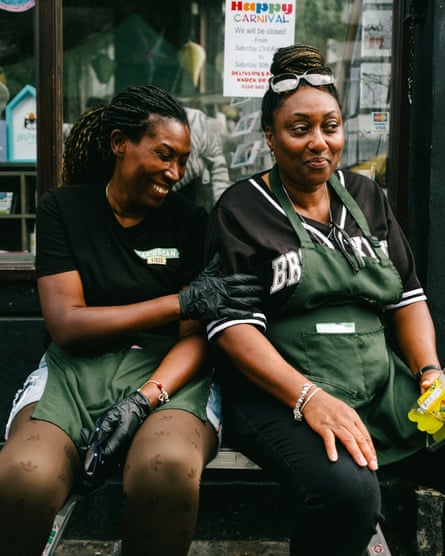

-
Kim and Sophia taking a break from their catering duties, and a dancer catching the beat at Different Strokes.
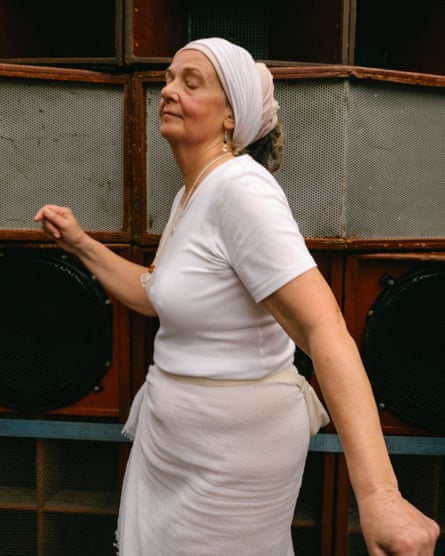
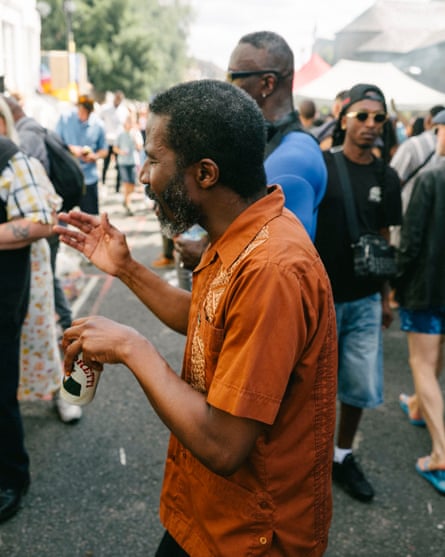
-
Two dancers lost in the music.
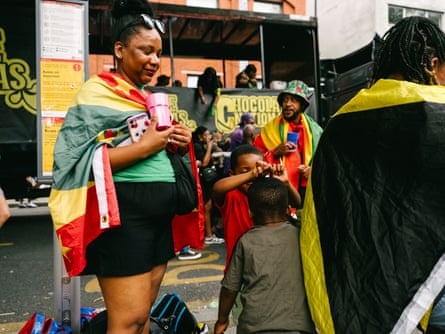
-
A family catching the parade near Southern Row.
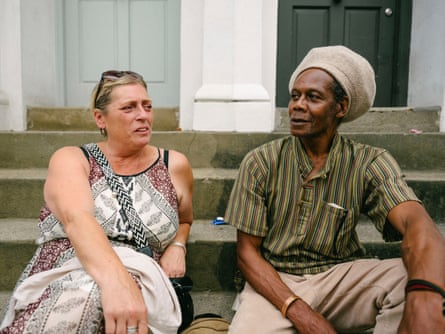
-
Janine and Sam from Leicester.
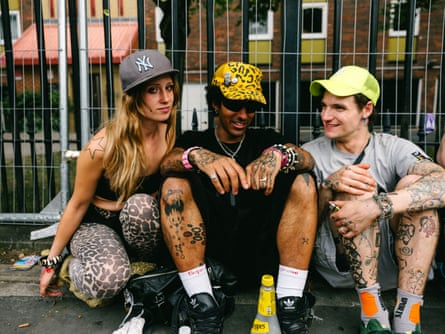
This year, the smaller moments stood out for me – lovers wining together, kids waving flags perched on their parents’ shoulders, friends screaming with delight as they spotted each other from a distance or catching up on a doorstep away from the action. For anyone who knows its essence, carnival has always been – always will be – about connection; to music, to friends, to protest, to heritage. No amount of headlines about crime or disruption can obscure the reality that people feel closer to one another here.
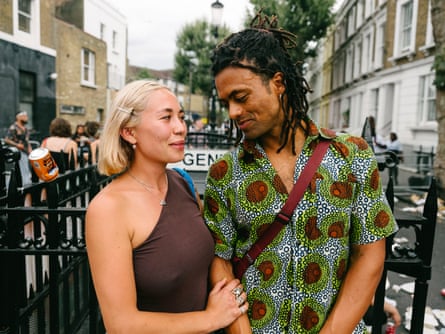
-
Ben and Tabi.

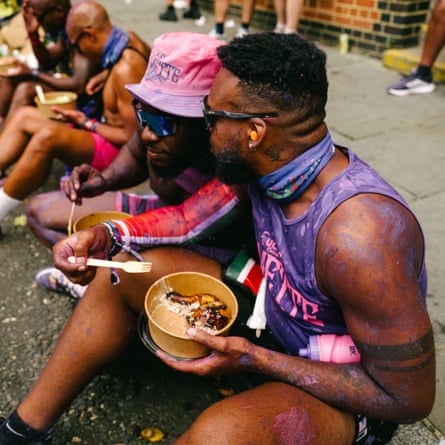

-
Father and daughter ready for the start of the day on Sunday.
My friends and I gather year after year at the same stages – there’s a ritual to it, a certainty that you’ll encounter people from every corner of your life. “I feel like you see everyone at carnival,” says Tabi, who is celebrating her eighth anniversary with her partner, Ben. They are my go-to people every year for the Monday dance, which surprisingly some of our friends shy away from. “There’s something special about it,” Ben adds, “On Sunday, all our friends come here and it’s amazing to be able to catch up with everyone. But on Monday, Tab and I have our own mini-carnival in a smaller group. I love it.”
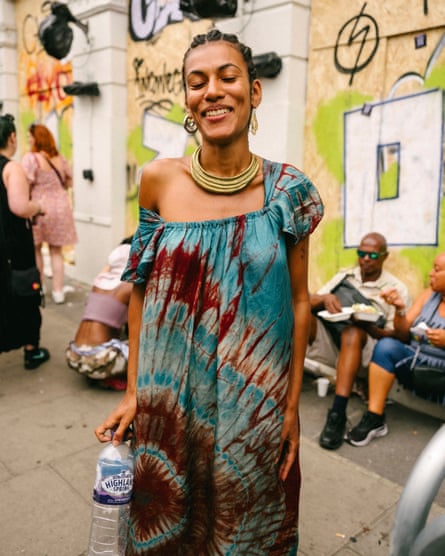
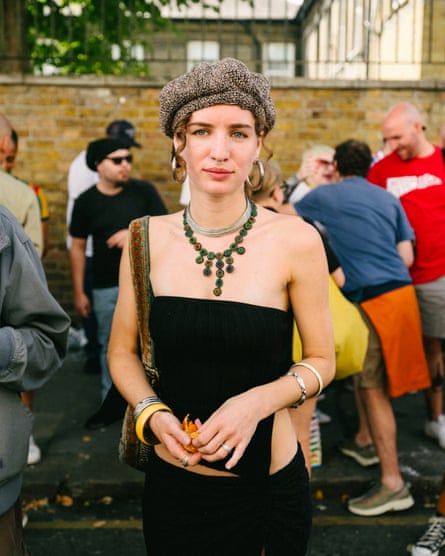
-
Anna, Matilda.
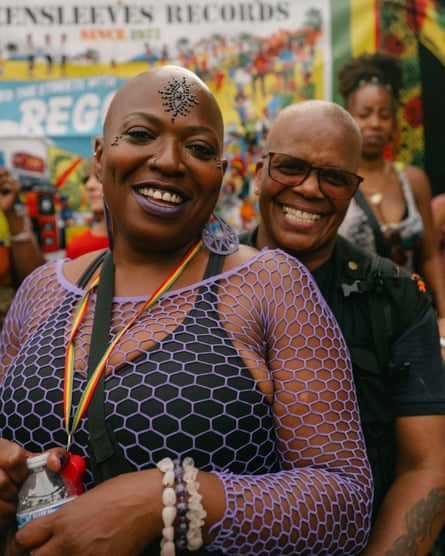

-
Terry and Angel at Channel One, Munsi at Sir Lloyd.

-
A group of young friends take a breather from the action.
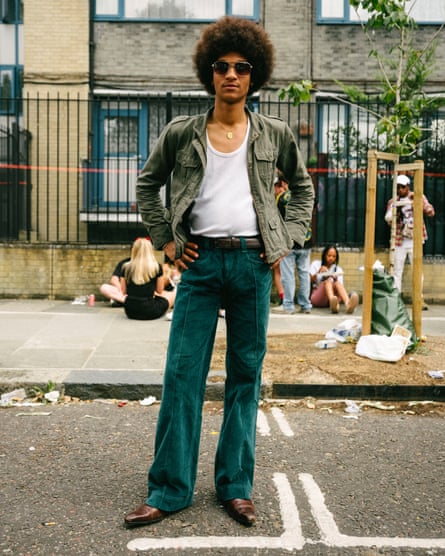
-
Djily poses with a timeless look.
While waiting for food on Golborne Road, I meet Anna, who moved from Paris partly because of carnival. “I’m inspired by the music culture in the UK,” she says. “In France I lived in a very white neighbourhood and felt detached. But here I feel so much more connected to my heritage.”

-
Alex and Errol with their son.
“It’s like a cultural and musical mecca,” says Errol, a DJ and curator who’s lost count of how many times he’s been. This year, he’s DJing in Powis Square for the first time in front of his young family. I ask about bringing children into the carnival fold, and his partner, Alex, tells me: “It’s been emotional. Seeing everything through his eyes – I’m just grateful we can experience that together.”

-
Carnival veterans Rajiv and Anita, with their daughter Ria and her friend.
It’s a sentiment shared by Rajiv and Anita, whom I meet just off Portobello Road, basking in the sunshine with their daughter Ria and her friend. They live in Hackney but this year have rented a hotel in Notting Hill so they can be even more among it all. “Ever since we’ve known each other we’ve come” says Rajiv with a wide grin and a jubilance about him. “We’ve been bringing Ria ever since she was a baby and now she comes on her own – it’s really special.”
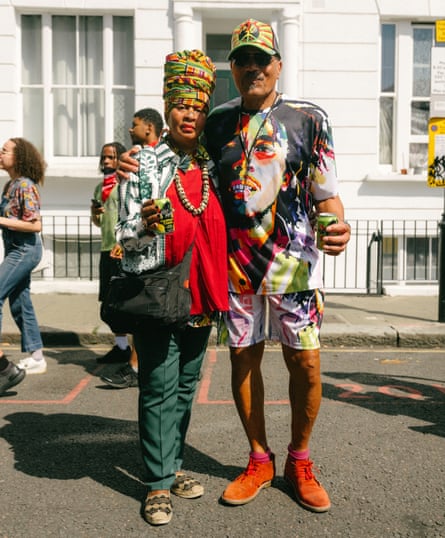
-
Marlene and Cecil on Goldborne Road.
At Gladdy Wax are Cecil and Marlene, a couple who’ve been coming together for more than 40 years. “I just love the mix,” Marlene says, before her tone sharpens. “And I hope we keep it. Our parents fought hard for this, so we’ve got to do our best to protect it.”

-
Tiring work; a little one takes a moment of rest from the music.
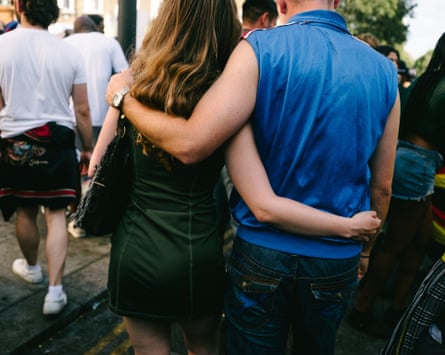
-
Irene and Sam arm in arm
That sense of responsibility sits at the heart of carnival – it’s not only a celebration but also a continuation, passed down through generations. Its survival feels inseparable from the intimacy it cultivates: family, friendship, love and heritage braided together on the streets of west London. Carnival is connection, and those who fail to see this miss out on one of Britain’s most prized cultural assets.

 2 months ago
44
2 months ago
44
